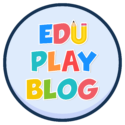If you haven’t read my post about redefining school, please read it before diving into this one. In this moment, I want us to ask ourselves how we, as educators, begin planning our classroom actively. Sure, we can check out Pinterest inspiration boards, buy motivational posters, or even start working on the class layout, but, although they play a small part, having these things aren’t really what makes a great learning environment. The key to crafting a place where your students feel safe to express themselves, optimize their learning and cultivate an eagerness to learn is to know your student.
When’s the last time you step into a day in the life of one of your students? Have you looked at your lessons, materials, activities, or even daily agenda through their eyes? As educators, our students should be the driving force behind all of our educational decisions. No matter how many years you have been teaching, it would be best to continually learn about the psychology of your students. Read books that specifically address the development milestones of the grade you teach, attend lectures, take a class at your local university in child development. All of these methods can help you better understand the mindset of the people who are going to be sharing your classroom space with you.
As a fifth grade teacher, one of the most impactful books I’ve read about my students’ mindset was Yardsticks by Chip Wood. I’ll never forget the many ah-ha moments I had while I was reading. Wood was able to take my observations of my student’s behavior that intrigued me, and explain what was happening in their development. Suddenly, I found that it was easier for me to sympathize with them, plan for their expectations, and remain patient in the face of behavior meltdowns.
Using his book as my diving board, I begin studying the typical behaviors of fifth graders. I realized that fifth graders have moved away from needing the emotional support of knowing how adults in their lives feel about them to caring about their peers’ approval. Once I learned this, I realized that if I corrected or chastised a student in front of the whole class, they would completely shut down due to social embarrassment. Instead of calling kids out, I began using positive reinforcement to correct students’ behaviors in front of their peers. I would shout out students that were making the choices that kept the lesson flowing. When I did this, I noticed that my students who were misbehaving would mimic the behavior they saw being praised. Then, I would quickly find a way, no matter how small, to acknowledge the students who were now behaving. This cycle of positivity helped correct my students’ behaviors while also supporting their need for to feel a sense of belonging to the classroom community by following the social norms.
Do you have a book that totally transformed your approach to understanding your students? Share the author and title in the comments!



